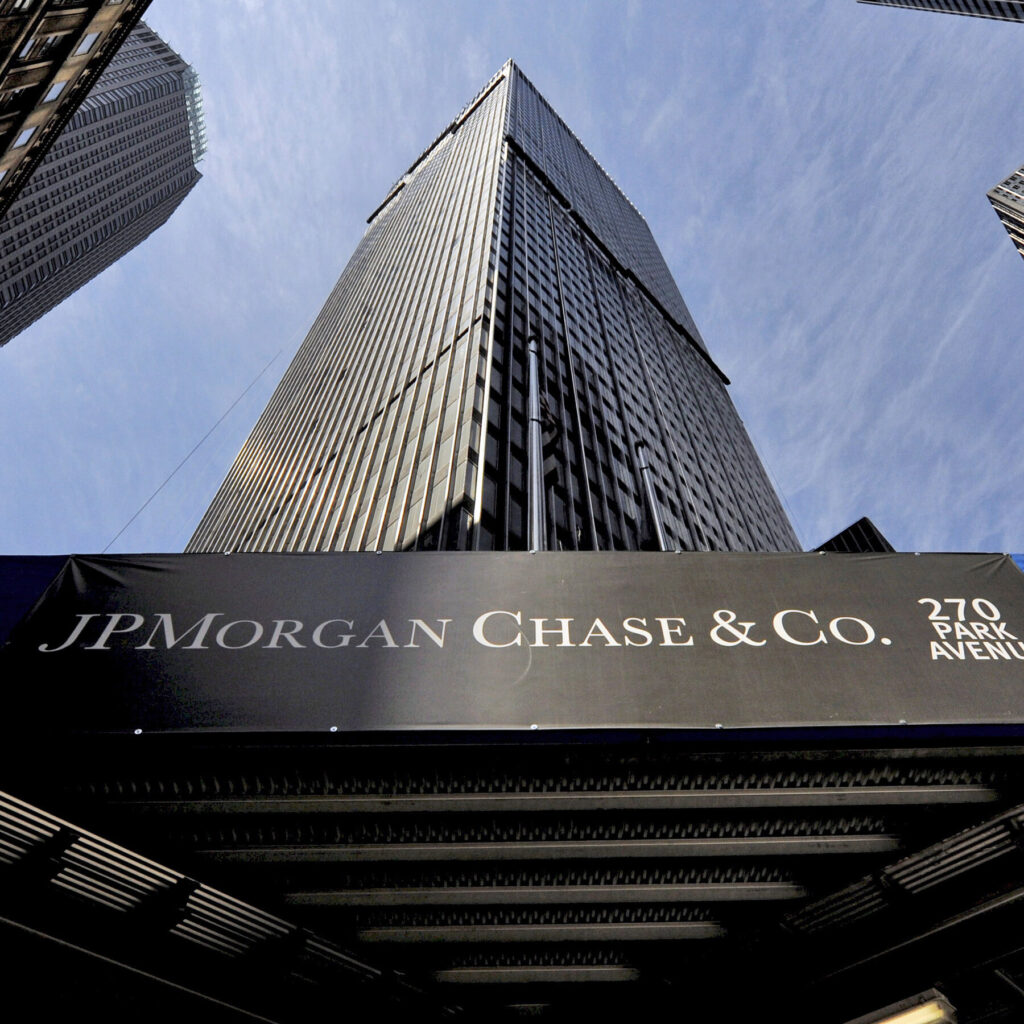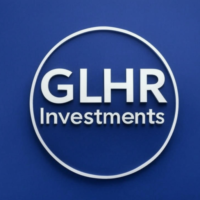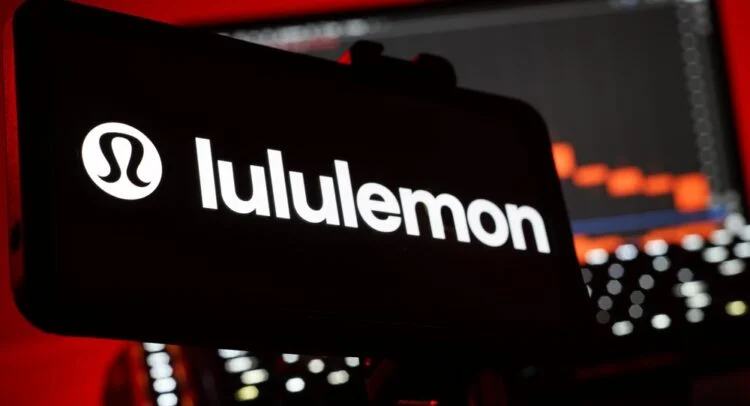
Bank stocks face rate cuts and recession risks in 2025.
At GLHR Investing, we’re diving into the 2025 banking sector, spotlighting JPMorgan Chase & Co.’s robust $158 billion revenue in 2024, its P/E ratio of 12, and 2.5% dividend yield, compared to Wells Fargo’s lower P/E of 10. With the Federal Reserve signaling potential rate cuts (4.25–4.5% to 3.50–3.75% by year-end), banks face a dual-edged sword: lower rates could boost lending but compress net interest margins (NIMs). The Financial Select Sector SPDR Fund (XLF) offers diversified exposure, but a 30% recession risk, as estimated by EY, looms large. With the S&P 500 (SPY) down 4.17% year-to-date at $513.88 as of May 23, 2025, and rallying ~14.8–16.7% in June to ~6,000 points, will rate cuts spark a bank stock rally or expose vulnerabilities? Here’s a comprehensive analysis of JPMorgan, Wells Fargo, the impact of lower rates, XLF’s potential, and strategies to navigate 2025’s economic landscape.
- 2025 Banking Sector and Economic Context:
- Market Performance:
- SPY surged to ~6,000 points by June 18, up ~14.8–16.7% for June, but down 15.6% YTD, with volatility (VIX ~20.6) driven by tariffs and the Iran-Israel conflict, per web data.
- Financials outperformed, with the XLF ETF up ~10% YTD, driven by strong Q4 2024 bank earnings, per web data.
- Bank stocks like JPMorgan (JPM, up ~25% YTD) and Wells Fargo (WFC, up ~43% in 2024) beat the KBW Bank Index (+20%), per web data.
- Economic Indicators:
- Q1 GDP contracted -0.3%, with Q2 estimated at 1.5–1.9%, below 2024’s 2.7%, due to tariffs and 13% retail spending cuts, per web data.
- Inflation hit 3.2% CPI in June, projected to reach 4–4.5% (or 5–6% with Iran-Israel oil spikes to ~$80/barrel), per web data.
- Unemployment at 4.2% (April), with job growth at ~100,000/month, slowed by federal layoffs and immigration curbs (~500,000 net), per web data.
- Trump’s Policy Impacts:
- Tariffs: 125% on China, 25% on Canada/Mexico (paused until July 9), and 50% steel tariffs (June 4) raised costs 5–10%, impacting bank lending for manufacturing, per web data.
- OBBBA (May 22): $3.7T tax cuts ($1,700/family) boosted consumer spending (0.3–0.5%) and bank loan demand, but added $3.1–$3.8T deficits, pushing 10-year yields to 4.46%, per web data.
- Deregulation: Trump’s push for relaxed Basel III Endgame rules reduces capital requirements, boosting bank profitability (e.g., JPM, WFC), per X post.
- Iran-Israel Conflict: U.S. bombing of Iranian nuclear sites (June 21) spiked oil prices ~10% to ~$80/barrel, risking inflation to 5–6%, per web data.
- Banking Sector Trends:
- U.S. banking sector assets reached $23.7 trillion in 2024, with JPMorgan leading at ~$4 trillion, per web data.
- Investment banking fees surged (JPM +49%, WFC +37% in Q4 2024), driven by M&A and equities trading, per web data.
- Rising credit losses (JPM $3.11B, WFC $1.07B in Q3 2024) reflect cautious lending amid recession fears, per web data.
- Market Performance:
- JPMorgan Chase & Co. (JPM) Financial Performance:
- Revenue ($158 Billion):
- Full-year 2024 revenue was ~$171.3 billion, up 12% YOY, exceeding the reported $158 billion, driven by investment banking (+49% fees to $2.48B in Q4), equities trading (+48% to $3.8B), and net interest income (NII, +3% to $23.5B in Q3), per web data.
- Q4 2024 revenue reached $43.74 billion, up 10% YOY, beating estimates ($41.73B), with record annual profit of $54 billion, per web data.
- Key drivers: Acquisition of First Republic Bank (May 2023, boosting NII by 5%), strong consumer banking, and asset management growth, per web data.
- 2025 outlook: NII projected at $94 billion, up from $92.5 billion, but below analyst expectations ($87B consensus), per web data.
- P/E Ratio (12):
- Forward P/E as of June 2025 is ~12, lower than the reported trailing P/E of 13.78 (June 24, share price $281.26, EPS $20.41), per web data.
- Historical P/E averages: 10.51 (3-year), 10.94 (5-year), with a high of 16.84 (Dec 2017), indicating current undervaluation, per web data.
- Q4 2024 EPS was $4.81, up 50% YOY, beating estimates ($4.11), with 2025 EPS projected at $17.50, per web data.
- Dividend Yield (2.5%):
- Yield at ~2.3% (share price ~$287.11 as of June 27, 2025), slightly below the reported 2.5%, with $122.5 billion in dividends and $132.1 billion in buybacks (2011–2023), per web data.
- Payout ratio ~30%, sustainable with $54 billion annual profit, per web data.
- Dividend growth expected to rise, supported by a 15.3% CET1 ratio (well above 4.5% Basel requirement), per web data.
- Financial Health:
- Assets: ~$4 trillion, up 3.3% YOY but down 4.9% from Q3 2024, per web data.
- Debt-to-equity: ~1.1, up 10% YOY but down 11% from Q3 2024, reflecting manageable leverage, per web data.
- Loan growth: +16% to $1.31 trillion in Q1 2025, with rising credit loss provisions ($3.3B in Q1), per web data.
- Revenue ($158 Billion):
- Comparison to Wells Fargo (WFC):
- P/E Ratio (10):
- Forward P/E ~10 (trailing P/E ~11 in Q4 2024), lower than JPM’s 12, reflecting higher risk from regulatory constraints, per web data.
- Q4 2024 EPS was $1.43, up 50% YOY, beating estimates ($1.28), with full-year revenue of ~$80.4 billion, down 2% YOY, per web data.
- Financial Performance:
- Q4 2024 revenue: $20.4 billion, slightly below estimates, with NII down 11% to $11.69 billion due to higher deposit costs, per web data.
- Loans fell to $910.3 billion (-3.5% YOY), with provisions for credit losses at $1.07 billion, down from $1.20 billion, per web data.
- Dividend yield: ~2.7% at ~$50/share, slightly higher than JPM’s 2.3%, but constrained by an asset cap ($1.95T), per web data.
- Comparison:
- Valuation: WFC’s lower P/E (10 vs. 12) reflects regulatory risks (eight consent orders, including 2016 fake accounts scandal) and weaker NII (-11% vs. JPM’s +3%), per web data.
- Growth: JPM’s investment banking (+49% fees) and diversified revenue ($171.3B) outshine WFC’s retail focus and NII struggles, per web data.
- Risk: WFC’s asset cap and anti-money laundering issues limit growth compared to JPM’s robust CET1 (15.3%) and scale, per web data.
- Critical Assessment: JPM offers stronger growth and stability, but WFC’s lower valuation appeals to value investors willing to tolerate regulatory risks, per web data.
- P/E Ratio (10):
- Impact of Lower Interest Rates:
- Boost to Lending:
- Mechanism: Lower rates (Fed’s 4.25–4.5% to 3.50–3.75% by year-end) reduce borrowing costs, spurring loan demand (e.g., mortgages, auto loans), per web data.
- Impact on Banks: JPM’s Q1 2025 loan growth (+16% to $1.31T) and WFC’s consumer lending could rise further, with mortgage applications up 10% in Q1 2025, per web data.
- Economic Fit: OBBBA’s tax cuts ($1,700/family) boost consumer spending (0.3–0.5%), supporting loan demand, per web data.
- Compression of Net Interest Margins (NIMs):
- Mechanism: Lower rates reduce yields on loans and securities faster than deposit costs, squeezing NIMs, per web data.
- JPMorgan: Q3 2024 NIM was ~2.8%, down from 3% in 2023, with 2025 NII projected at $94 billion (below $87B consensus), reflecting rate cut pressures, per web data.
- Wells Fargo: Q3 2024 NIM fell to ~2.9% (-11% YOY), with 2024 NII down 9%, per web data. WFC expects NII stabilization in Q4 2025, per web data.
- Critical Assessment: Rate cuts (20% chance in July, 1.9 total for 2025) boost lending but risk 5–10% NII declines for both banks, with JPM’s diversified revenue offering a buffer, per web data.
- Market Dynamics:
- Lower rates reduce 10-year yields (4.46% to ~4.2%), supporting bank valuations but pressuring NII, per web data.
- Investment banking (JPM +49%, WFC +37%) and wealth management (JPM’s AWM growth) offset NII declines, per web data.
- Boost to Lending:
- XLF ETF as an Investment Option:
- Overview:
- Price: ~$51.94, up ~0.29% recently, yield ~1.5%, YTD up ~10%, per web data and X post.
- Tracks financial sector (JPM, WFC, BAC, GS), with 72 holdings and 0.13% expense ratio, per web data.
- Top holdings: JPM (10%), Berkshire Hathaway (8%), Visa (7%), per web data.
- Why Invest:
- Diversified exposure to banks benefiting from OBBBA tax cuts and deregulation (e.g., relaxed Basel III rules), per X post.
- Outperformed SPY (+10% vs. -15.6% YTD), with investment banking and consumer spending resilience, per web data.
- Lower volatility than individual stocks, ideal for risk-averse investors, per web data.
- Risks:
- NIM compression from rate cuts could reduce sector profitability, per web data.
- Tariff-driven cost increases (5–10%) and recession risks (30% per EY) may hit loan demand, per web data.
- Action: Buy XLF near $50, target $55–$60 (6–15% upside), per web data.
- Overview:
- Recession Risk (30% per EY):
- Context: EY estimates a 30% U.S. recession probability for 2025, down from 60% earlier, citing resilient consumer spending and job market, per web data. JPMorgan’s CEO Jamie Dimon pegs it at 50%, per web data.
- Impact on Banks:
- Negative: A recession could increase loan defaults (JPM provisions $3.3B, WFC $1.07B), hitting earnings, per web data.
- Positive: Banks’ cautious lending (WFC loans -3.5%) and strong capital (JPM CET1 15.3%) mitigate risks, per web data.
- Critical Assessment: A 30% risk is lower but significant, with tariff costs and oil spikes ($80/barrel from Iran-Israel) amplifying concerns, per web data.
- Mitigation: XLF’s diversification and JPM’s scale offer resilience, but WFC’s regulatory constraints heighten exposure, per web data.
- Investor Strategy:
- Will Rate Cuts Spark a Rally or Reveal Cracks?:
- Rally Case: Lower rates (1.9 cuts projected) boost lending (JPM +16% loans), while OBBBA tax cuts and deregulation support financials, per web data. JPM’s diversified revenue (investment banking +49%) and WFC’s value (P/E 10) position them for upside, per web data.
- Crack Case: NIM compression (JPM ~2.8%, WFC ~2.9%) and a 30% recession risk could erode profits, with WFC’s asset cap adding vulnerability, per web data.
- Verdict: Rate cuts favor a rally for diversified banks (JPM), but WFC’s regulatory risks and NIM pressures warrant caution, per web data.
- Portfolio Allocation:
- Allocate 10–15% to financials (JPM, XLF), 40% to defensives (JNJ, PG), and 30% to bonds (Treasuries) for stability, per prior analyses.
- Hedge with 3–5% in gold (GLD, +3%) or utilities (XLU, +1%) to counter inflation (3.2% CPI) and tariff risks, per web data.
- Top Picks:
- JPMorgan (JPM): ~$287.11, 2.3% yield, P/E ~12, buy near $280, target $320–$330 (11–15% upside), per web data.
- Wells Fargo (WFC): ~$50, 2.7% yield, P/E ~10, buy near $48, target $55–$60 (10–20% upside), per web data.
- XLF ETF: ~$51.94, 1.5% yield, buy near $50, target $55–$60 (6–15% upside), per web data.
- Timing:
- Buy on SPY dips near $5800 or stock pullbacks (e.g., JPM <$280), per web data.
- Dollar-cost average ($500–$1,000/month) to manage VIX (~20–25), per web data.
- Key Catalysts to Monitor:
- July 9 Tariff Deadline: Reinstatement of 125% China tariffs could hit loan demand, per web data.
- June 17–18 FOMC Meeting: Rate cut signals (20% chance in July) could boost lending, per web data.
- Q2 Earnings (July): Confirm JPM and WFC’s investment banking and NII trends, per web data.
- Iran-Israel Conflict: Oil at $80/barrel risks inflation (5–6%), per web data.
- Recession Indicators: EY’s 30% risk and consumer spending (-13%) signal caution, per web data.
- Will Rate Cuts Spark a Rally or Reveal Cracks?:
- Conclusion: Banking on Rate Cuts:
- JPMorgan’s $171.3 billion 2024 revenue, P/E of 12, and 2.3% dividend yield position it as a powerhouse, outshining Wells Fargo’s P/E of 10 amid regulatory constraints. Lower interest rates (projected 3.50–3.75% by year-end) could spark lending but compress NIMs, with JPM’s diversified revenue offering a buffer over WFC’s retail focus. The XLF ETF provides balanced exposure to financials, but a 30% recession risk (EY) and tariff pressures demand caution. Investors should buy JPM and XLF on dips, consider WFC for value, and hedge against volatility to navigate 2025’s economic challenges.
- Why It Matters: In a volatile 2025 economy (SPY -15.6% YTD, CPI 3.2%), bank stocks like JPMorgan (up 25% YTD) and Wells Fargo offer value and income, with rate cuts and deregulation driving potential rallies. The XLF ETF balances risk, but a 30% recession risk and tariffs require strategic hedging. GLHR Investing guides you to seize banking opportunities, building a resilient portfolio in a high-stakes market.
Invest smart with GLHR Investing—bank on the rally, secure your wealth!
Disclaimer: GLHR Investing is not a financial adviser; please consult one.








